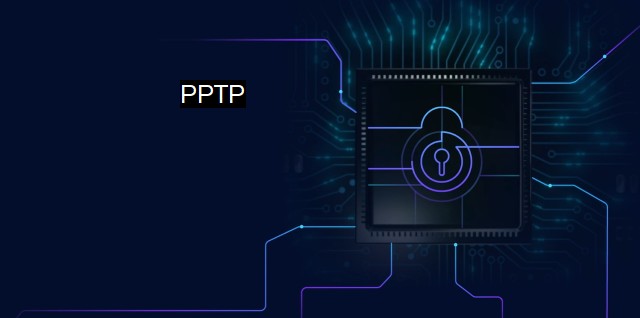What is PPTP?
Understanding PPTP: The Point-to-Point Tunneling Protocol for Secure VPN Connections
Point-to-Point Tunneling Protocol (PPTP) is a network protocol primarily implemented for creating a Virtual Private Network, abbreviated as VPN. One of the cardinal characteristics of this protocol is that it facilitates data communication that is secure over networks such as the Internet. Despite being one of the oldest methods used for VPN connections, PPTP is still largely employed in today's technologically advanced age due to the simplicity and speed it boasts.To comprehend the role of PPTP it's paramount to first understand how it functions. Communication in PPTP occurs in a series of steps: establishing control connections, managing tunnels, and encapsulating data. Firstly, a client dials a server using an access network. The control connection, which supports the periodic echo-request and echo-response messages being exchanged, is then created to test the availability of the counterpart. Occasionally, it also carries other sorts of messages. If the VPN is phased out because of inactivity or perhaps any network issues, control connections can be easily dropped and rebuilt.
On initialization of communication between the client and the server, PPTP manages the creation of a data tunnel. Two distinct channels support the topic of tunnel management. The first is the transmission or data-sequence channel for the transportation of datagrams and the other is an entirely separate control-discard channel for the elimination of any networks that might run asymptomatically. The encapsulated data or datagrams are then transmitted through the server.
Highlighting the integral role PPTP plays in the cybersecurity world actually brings us on to the subject of exploration of PPTP's importance to antivirus measures. The VPN networks enabled by PPTP become encrypted, which essentially obscures the transmitted information. For instance, any attempts to locate or identify the user become futile because the IP address is meticulously shielded.
As part of antivirus measures, PPTP creates a protective facade that aids to buffer any unwanted malware or potential threats from intercepting private information. Modern-day hackers are equipped with a greater array of tools, exploiting vulnerabilities with relative ease. Under such circumstances, the tunneling protocol makes sure that even if the personal network is compromised, the data remains perfectly intact, undisturbed by the hacker's prying eyes.
In addition to securing networks and information, PPTP assists in bypassing geographical restrictions on certain online content. Encrypted networks yield an unsuspecting mean of access into restricted information without significantly raising any red flags, thereby preserving network integrity and maintaining private and safe access to information.
Lastly, PPTP plays a pivotal role when it comes to antivirus recognition. Since PPTP stimulates a protective tunnel around the data being freely transmitted across networks, it makes it straightforward for a well-structured antivirus to promptly detect any anomalies, malware, or viruses that attempt to infiltrate the network. By encapsulating the data in a controlled environment, the location, analysis, and quarantine actions towards threats are effectively aided.
Nonetheless, like any tool with PPTP is not flawless. It has been known to have issues with security - vulnerabilities to dictionary attacks, exploitation of control-channel messages, hackability due to lack of session-token requirements, to name a few. In some cases, it's highly recommended to consider newer, more robust protocols, such as OpenVPN or the Layer 2 Tunneling Protocol with pre-shared key (L2TP/IPSec) for more secure and private connections.
PPTP is crucial for ancient VPN connections due to its ease of setup, quicker speeds, and backwards compatibility. in a highly challenging and rapidly evolving cybersecurity landscape, it is the combined use of PPTP with other VPN configurations and antivirus solutions that substantially enhance the security outline, essentially architecting a more fortified wall of defense against threats.

PPTP FAQs
What is PPTP and how does it relate to cybersecurity?
PPTP or Point-to-Point Tunneling Protocol is a VPN protocol that allows secure communication between two endpoints, commonly used in the context of cybersecurity to protect against data breaches and unauthorized access to sensitive information. PPTP creates a secure tunnel for data transmission, ensuring that data cannot be intercepted by cybercriminals or hackers.Is PPTP secure against antivirus attacks?
While PPTP provides encryption and security for data being transmitted, it is not immune to antivirus attacks. Cybercriminals can exploit weaknesses or vulnerabilities in the PPTP protocol to gain unauthorized access to your network or system. Therefore, it is important to use updated antivirus software to protect your system against such attacks.What are the advantages of using PPTP in cybersecurity?
Some of the advantages of PPTP include its ease of use, compatibility with most platforms, and its ability to provide good security and encryption for data transmission. PPTP is also more affordable than some other VPN protocols and can be used for remote access to corporate networks.Can PPTP be used as a replacement for an antivirus software?
No, PPTP is a VPN protocol and not a replacement for antivirus software. Antivirus software provides protection against malware, viruses, and other digital threats, while PPTP is used to secure data transmission between two endpoints. It is recommended to use both PPTP and antivirus software together for complete cybersecurity protection.| | A | | | B | | | C | | | D | | | E | | | F | | | G | | | H | | | I | | | J | | | K | | | L | | | M | |
| | N | | | O | | | P | | | Q | | | R | | | S | | | T | | | U | | | V | | | W | | | X | | | Y | | | Z | |
| | 1 | | | 2 | | | 3 | | | 4 | | | 7 | | | 8 | | |||||||